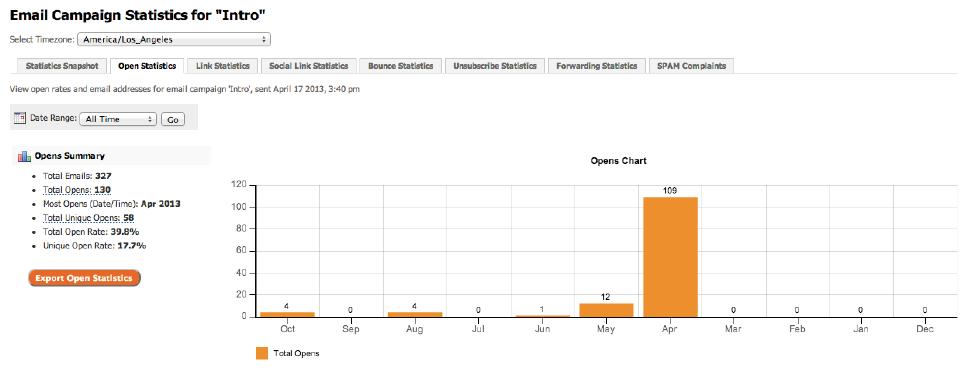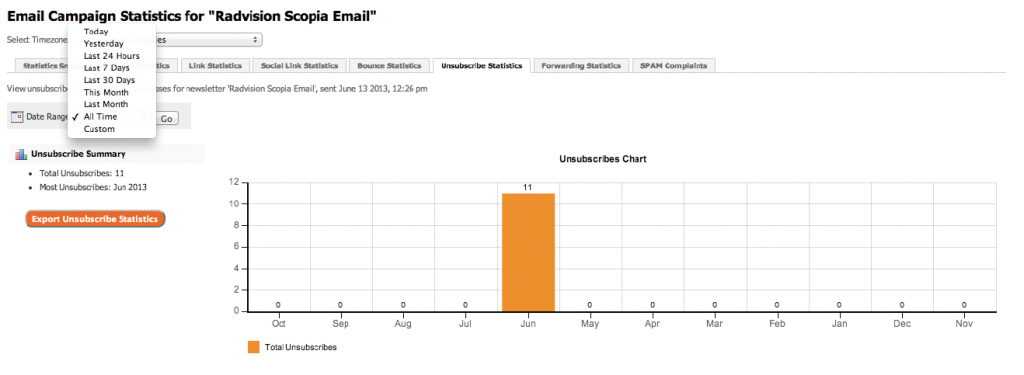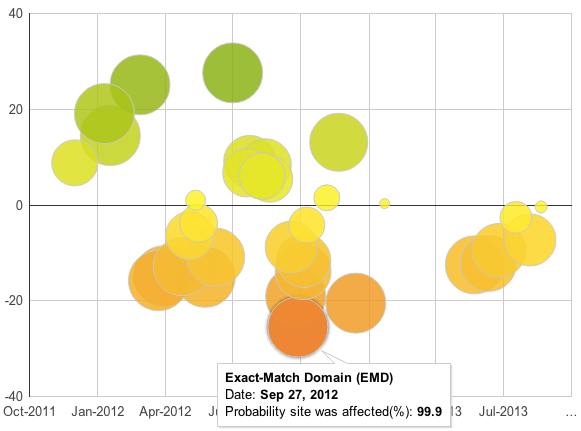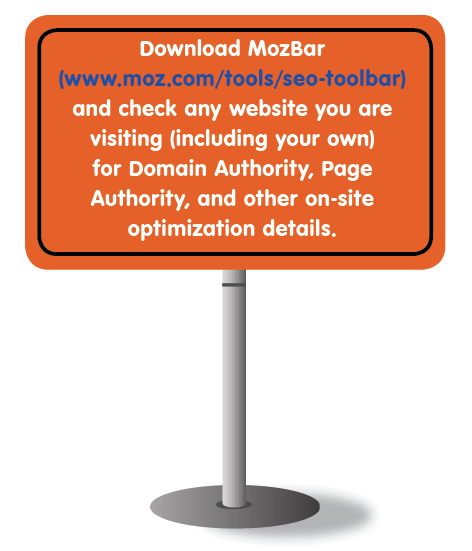This is a 3 part blog series that explores popular metrics for different avenues of online marketing, whether they matter for your business, and the one metric that rules them all.
If you are looking for an analytics tool to help you measure your online marketing, then you're in luck. There are hundreds, if not thousands that measure various online marketing strategies. Heck, there are hundreds that you can use just help you measure your Twitter activity. But the question is, which metrics are just for show and which ones actually affect your bottom line?
To view Part I – click here
PART II
EMAIL METRICS
Serious email marketers focus on a variety of metrics to determine the success of a particular campaign. Here are three metrics that many focus upon, and why they matter – or don’t.
1 – Open Rate
Have the new Gmail tabs affected the number of people who are receiving your email marketing messages? A change in open rate would certainly give the answer. The open rate is also a good indicator of whether a subject line was effective or not, as this is usually what determines whether a person will be intrigued by the content of your email.
When comparing stats from multiple email campaigns and A/B testing, you should take notes on different variables such as the subject line copy, day of the week, time of day, and segments an email was sent to. This can help you optimize your email campaigns for success.
2 – Clicks
The main goal (for most business emails) is to encourage recipients to click through to your website. Looking at just the number of clicks a particular email has received is not enough – you want to know whether people are more likely to click on a text link in the beginning of the message, a banner in the bottom, or a social icon in the header. So don’t just stop at clicks. Find out exactly what gets people excited about clicking so you can further optimize your emails to drive traffic back to your website.
3 – Unsubscribes
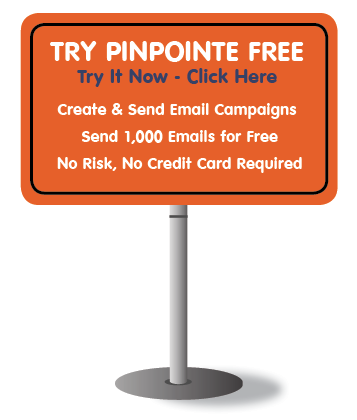 No one wants to think about them, yet it’s important to analyze which email messages result in the most unsubscribes. While a small number of unsubscribes per email is common, if you notice a spike on a particular email campaign, you will want to analyze it to see why people unsubscribed.
No one wants to think about them, yet it’s important to analyze which email messages result in the most unsubscribes. While a small number of unsubscribes per email is common, if you notice a spike on a particular email campaign, you will want to analyze it to see why people unsubscribed.
Was this email sent too closely to another? Was it the fifth email in a line of sales emails for a particular product that people might not be interested in? Were there more links in the email? Did you add a new sponsor? Think about anything that is different in this email from previous ones to see if you can pinpoint a possible strategy that you should not repeat in the future.
SEARCH METRICS
If you talk to a search engine marketer, you’re likely to hear about a ton of different metrics when it comes to your website and to your competitors. The following are the most popular and how they affect your business.
Keyword Rankings
Keyword rankings are probably one of the more important metrics when it comes to organic search marketing. If you aren’t ranking for your business’s main keyword phrases on the first page, you aren’t going to get much traffic from search engines for those phrases. Anytime you are actively working on search engine optimization, you should see your keyword rankings preferably improving, or at least maintaining if you are already in a good spot on the first page of search results.
To monitor your keyword rankings, you can use tools like Authority Labs. This tool allows you to log in and view your current keyword rankings. You can also click through to see how your website has been performing with a particular keyword since you started monitoring it.
You can also try Whoosh Traffic. This tool will allow you to login and check your keyword rankings as well as receive daily ranking updates via email.
What you will want to watch out for in particular with your keyword rankings is a sharp decline. While it is common to see small fluctuations on a regular basis, if you see one or more of the main keywords you focus upon drop dramatically, it can be an indicator that you have been affected by a major Google algorithm change or penalized by Google for suspicious search engine optimization strategies. Tools like the Fruition Penalty Checker can help you quickly identify whether or not your website has been affected negatively by Google.
You can use this tool to find out when your website was affected and what specific algorithm change (if any) caused it. Then, you can research that specific algorithm change to find out what you can do to repair your website’s reputation on Google.
Backlinks
The number of backlinks a website has can be misleading. One website could have 10,000 low-quality backlinks whereas another website could have 100 high-quality backlinks. The one that ranks higher would really depend on a lot of factors including keyword optimization of the anchor text, possible Google penalties of low-quality links, and the on-site optimization of both websites.
The main thing you want to know about your own backlinks is not the quantity, but the quality. Whether you outsource your link building activities or have them performed in-house, don’t let the reporting only show a number of backlinks attained. Make sure that the reporting includes where the backlink is from, why it is relevant to your business, and how much traffic the website linking to yours receives. Although the latter detail is not commonly reported by SEOs, it can be useful to determine how authoritative the website really is.
Domain & Page Authority
Google PageRank was a numerical rating from 1 to 10 given to websites, once used religiously to measure the authority of a page you receive a backlink from. Since Google has seemingly stopped updating Google PageRank, the new popular metric to rank a website’s authority is Domain and Page Authority. This metric, measured by Moz (formerly SEOmoz) is a score from 0 to 100 that says how likely a domain / page will rank in search based on number of incoming links, MozRank (determined by number of quality of incoming links), and MozTrust (determined by authority of incoming links).
This is another good metric to use when evaluating the strength and quality of a backlink. You can also use it to measure your own website’s strength and backlink profile. So long as your website’s domain authority continues to rise, your search engine optimization campaign is going in the right direction. To quickly check your domain authority, visit Open Site Explorer and enter your domain.
You can also download the MozBar and check any website you are visiting (including your own ) for Domain Authority, Page Authority, and other on-site optimization details.
What metrics do your business focus on most, and how do you measure them? Please share in the comments!
Look for Part III of Essential Marketing Metrics – covering social marketing metrics and the most important marketing metric…
Marketing Analytics Tools Mentioned in the Blog Article:
Email Marketing
Pinpointe – www.pinpointe.com
Track your email marketing campaign results with Google Analytics and get comprehensive activity reports for all of your email marketing campaigns.
Keyword Rankings
Authority Labs – www.authoritylabs.com
Allows you to log in and view your current keyword rankings and click through to see how your website has been performing with a particular keyword since you started monitoring it.
Whoosh Traffic – www.wooshtraffic.com
Allows you to login and check your keyword rankings and receive daily ranking updates via email.
Fruition Penalty Checker – www.fruition.net/google-penalty-checker-tool
Helps you quickly identify whether or not your website has been affected negatively by Google.
Domain & Page Authority
MOZ Bar (on moz.com) – www.moz.com/tools/seo-tool-bar
Check any website you are visiting (including your own) for domain authority, page authority, and other on-site optimization details.
Open Site Explorer – www.opensiteexplorer.org
Enter your domain to quickly to check your domain authority.

